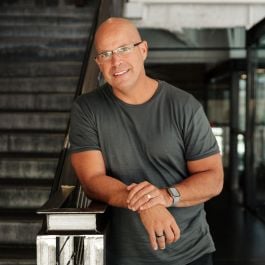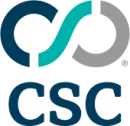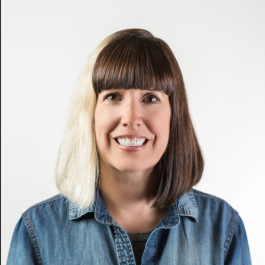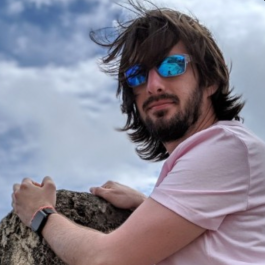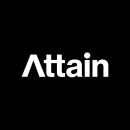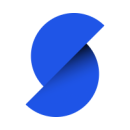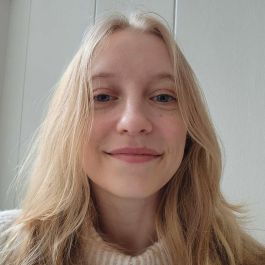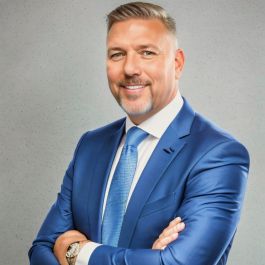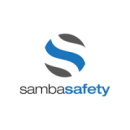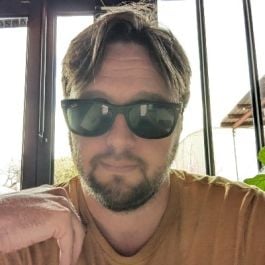One of the most prized skills to have as an engineer is softer than you might think.
Communication; it’s an essential ingredient for any successful team, especially in the engineering realm. When the stakes are high, the tasks are numerous and the amount of information is unwieldy, effective dialogue is critical, as it ensures all of these moving parts carry projects over the finish line.
So how does a team build powerful communication skills? According to engineering leaders across the country, there are many ways to accomplish this, whether that’s sharing data often, embracing a coaching mindset or simply practicing gratitude.
Regardless of the approach taken to establishing strong communication, the end result is the same: a stronger, happier team. Built In caught up with 12 leaders of strong engineering teams to learn how they foster effective communication.
Featured Companies
Qualtrics’ experience management solutions help organizations deliver better customer experiences, improve employee engagement and bolster strategy and research efforts.
What’s one key communication habit you’ve developed and encouraged among your team?
To me, the most critical habit any product and engineering team should have is customer obsession. If your team is deeply connected with customers, you’re going to build the right products that will hit market-fit faster. If you want to drive the habit of customer connection, it has to be a key part of your reward and celebration system. So how do you do that for a software company? You focus the reward and celebration system around customer usage.
“If your team is deeply connected with customers, you’re going to build the right products that will hit market-fit faster.”
What effect has customer obsession had on the way your team works and collaborates?
By focusing the reward and celebration system on usage, you put the customer at the center of everything the team does. When I say reward and recognition system, I mean that the team’s bonus and equity rewards are based on driving and exceeding high-quality usage targets.
Instead of teams focusing on shipping new technology, which is often how software teams are rewarded, you focus the entire team on the customer. If a customer is blocked or struggling, the reward and celebration system says you should drop everything you’re doing and assist the customer.
What advice do you have for other engineering managers who are looking to create healthy communication habits among their teams?
Data empowers people and teams. The more data people have, the more they can make independent decisions that align with the overall mission and strategy of the team. My principle here has been to share as much data as possible.
One approach I have taken for more than a decade is to hold a monthly meeting with all of the people managers in the organization, which I call “Brad’s Top of Mind.” The meeting gives me a chance to share with the managers what’s top of mind for me. This empowers our managers as they lead their people because they know where their leader’s mind is focused. It’s also a key driver of culture, which is the most important thing for leaders to focus on.
CSC’s tax solutions are intended to align processes, enhance speed and transparency, improve analytics and lower risk.
What’s one key communication habit you’ve developed and encouraged among your team?
A leader’s most powerful tool is frequent, transparent communication. Transparency can go a long way in building trust, breaking down communication barriers and creating a healthy workplace culture. Direct, open and honest communication helps teams trust each other and be more effective in their roles.
A great example of this was when I decided to move to India from the United States to accept a new, short-term leadership role in enterprise technology. Since this career and lifestyle change was both a professional and personal commitment, I relied on the trust I had in my leadership team to stay engaged during this transition. Candidly, my family and friends thought I was out of my mind to take on this challenge, but it has been so rewarding that I’ve happily extended my time, residing in India for two and a half years.
What effect has frequent, transparent communication had on the way your team works and collaborates?
Transparent dialogue builds trust and develops partnerships to inspire positive changes. Open communication also promotes creative and critical thinking within my team, where team members feel safe sharing ideas, collaborating and voicing their concerns. Trust and honesty have helped my team feel valued and respected while enabling them to be more receptive to my ideas and perspectives. Together, we’ve created a collaborative, progressive and innovative global culture.
What advice do you have for other engineering managers who are looking to create healthy communication habits among their teams?
Engineering managers need to clearly convey the organization’s goals, opportunities, and challenges to build trust and foster a safe, collaborative, problem-solving environment for their employees. They should also be active listeners and empathetic with their verbal and nonverbal cues to engage, influence and inspire their team effectively. Finally, to be successful, they should be adept at conveying complex concepts and designs to departments and stakeholders as well as gaining support for their ideas across the organization.
Corporate Tools considers itself a “professional-services-as-a-product” company, specializing in various types of solution development.
What’s one key communication habit you’ve developed and encouraged among your team?
One key communication habit I’ve developed is practicing radical candidness. I had my leadership team and future leaders all read Radical Candor by Kim Scott, which emphasizes being candid with your employees and teammates while caring personally about each other. It’s about giving honest feedback that’s direct yet empathetic. This is something I think all leaders and humans in general struggle with, so it’s so useful to integrate these lessons into our daily lives.
For example, during alignments or one-on-ones, we provide straightforward feedback without sugarcoating it while ensuring it’s delivered kindly. If someone’s code quality needs improvement, we address it directly and offer support to help them improve it.
Why is radical candidness an important habit to cultivate, and what effect has it had on your team culture?
I think this habit is crucial because it promotes transparency and trust, both of which we’re lacking in the world right now. Being candid yet understanding makes feedback honest and constructive while removing fear of criticism. This puts the focus on growth instead.
The impact on our team culture has been significant. It has created an environment in which our team members feel safe to speak up, knowing their input will be valued. This new openness has led to better collaboration and mutual respect.
“Being candid yet understanding makes feedback honest and constructive while removing fear of criticism.”
What advice do you have for other engineering managers who are looking to create healthy communication habits among their teams?
My advice for other engineering managers ties back to embracing radical candor. If you encourage your team to be open and honest while also being kind, you can create an incredibly healthy communication culture at your company.
Sanity’s cloud-based platform enables organizations to create customizable content workspaces so they can deliver more compelling digital experiences.
What’s one key communication habit you’ve developed and encouraged among your team?
At Sanity, we’re a remote-first company with a distributed team, so effective asynchronous communication is key for our productivity. When developers go online, they should always know where to find relevant project status information without needing to scroll through a long backlog of Slack chatter or wait for a teammate to be available to talk.
About a year ago, we adopted Linear for project management, and we’ve built standards around how we use Linear to support healthy communication practices in our research and development teams, which include developers, product managers and designers. We use a six-week cadence of work and create a Linear project for each different stream of work. We’ve also aligned on standard issue state definitions across teams. A nice side effect of this is that it allows us to surface metrics on team productivity to help our engineering managers stay on top of what’s working and where we need more attention.
Why is effective asynchronous communication an important habit to cultivate, and what effect has it had on the way your team works and collaborates?
It’s important for individuals to know where to find and communicate the “source-of-truth state” for projects they’re involved in. This saves time, allows individuals to pick up work whenever they start their day, reduces the need for status-update meetings and allows synchronous meeting time to be focused on technical discussions, brainstorming and decision-making. We also have a culture of demoing work early and often and love to spend meetings seeing and discussing our latest demos. This is usually much more productive than getting a verbal status update.
“It’s important for individuals to know where to find and communicate the ‘source-of-truth state’ for projects they’re involved in.
A high-level understanding of what’s happening across our R&D teams is also relevant for many people across our company. All developers, PMs, leaders, support team members and others should have access to this information when they want or need it. We use Linear’s project updates feature to share weekly updates on active projects across our teams. These updates cover progress, risks, next steps and forecasted delivery dates. They’re automatically shared in a dedicated Slack channel called #project-updates, which anyone in the company can follow.
What advice do you have for other engineering managers who are looking to create healthy communication habits among their teams?
Work with your teams to align on a source of truth for project- and task-tracking, whether that’s Linear, GitHub, Jira or another tool. Make sure everyone understands how to use the tool effectively to communicate status, capture discussions and share relevant information. Standardize terminology and basic processes so there is a shared understanding across the team, but beware of adding too much bureaucracy. Your process should feel useful and intuitive once your teams get the hang of it.
Encourage a culture of writing things down, whether that’s in PR descriptions, design docs, product specs or work statuses. Writing forces clear thinking and creates artifacts that can be referenced later. Finally, make sure meetings are used effectively. Status meetings should be kept to a minimum in favor of async updates. When you do meet, lean more toward working sessions, brainstorming and discussions over passive presentations. Demos, pair-programming and collaborative problem-solving are great ways to use precious synchronous time.
Gogo Business Aviation offers customizable, in-flight Wi-Fi for business aircraft.
What’s one key communication habit you’ve developed and encouraged among your team?
Ask good questions, listen fully and repeat. My goal, while not always obvious, is to help the team build relationships, understand where they’re aligned and see different points of view. By doing this, the teams will tend to be more effective and collaborative.
Taking just a moment to think about this, it becomes obvious that basically all the interactions we have are based on questions and responses, so it may not seem all that special. But at the surface level, most of these interactions are very transactional. For example, how often do you exchange the quick, “Hello, how are you?” greeting as you cross paths with someone in the hallway? How often is the response, “I’m good” or a shrug and “It’s a Monday”? Do we ever really stop and ask, “What can I do to help?” or “You don’t seem like you’re good. What’s going on?” Typically, the technical exchanges in the team are usually just as transactional and intended to quickly relay basic information. But I would rather team members ask really good questions and truly listen to the responses, as I think the team comes up with better solutions and works together better when things are less transactional.
“Ask good questions, listen fully and repeat. … The team comes up with better solutions and works together better when things are less transactional.”
What effect has this habit had on the way your team works and collaborates?
Some of our best team interactions come from technical forums, in which someone from the team provides information about how a feature is implemented or details around complex functions. In many cases, this helps bring all those participating to roughly the same level of knowledge, allowing deeper questions and conversations about how it works.
With this, those questions and responses help steer and guide individuals on ways to do things that they might not have previously considered. Whether they’re trying to solve a difficult technical problem or understand who is doing what, questioning and listening is the key to building alignment and understanding. Not only does this foster collaboration, but it also builds relationships, trust and confidence.
We must be careful to make sure the questions come from a desire for understanding and that we truly listen to the responses. If we ask questions for the purpose of calling negative attention to something, this doesn’t work. Likewise, it also doesn’t work if we’re thinking about the next question to ask instead of listening to the response.
What advice do you have for other engineering managers who are looking to create healthy communication habits among their teams?
Some of the best leaders I’ve worked with asked really good questions that are usually perfectly timed and intended to make us think a bit deeper, think outside of the box or come at it from a different point of view. Almost always, these questions helped shape our decisions. These questions also helped us become better leaders, maybe without us realizing it. I’ve found that I’m now better at asking those challenging questions, listening and reading responses and following up with another question. My leaders in turn are also learning to ask questions that help their teams think differently and come to alternate conclusions.
Simply put, as a leader, it starts with you. You have to communicate in the way you need your team to communicate, and you have to do the things that you want your team to do. Keep at it, but don’t be afraid to also try something new or adjust.
Artera’s solution healthcare organizations and federal agencies unify, simplify and orchestrate patient communications.
What’s one key communication habit you’ve developed and encouraged among your team?
One key communication habit that I’ve fostered within my team is the practice of coaching, which is something I use in all aspects of teamwork, whether it’s through one-on-ones or larger group discussions. Rather than simply provide advice or answers, I encourage team members to explore solutions on their own by asking probing questions. This approach empowers individuals to uncover answers themselves, promoting personal growth and leadership development. During crucial conversations or disagreements, I first like to delve into the root cause of issues rather than dictate solutions.
“Rather than simply provide advice or answers, I encourage team members to explore solutions on their own by asking probing questions.”
It’s not uncommon to run into problems in engineering. In fact, we run into issues every single day. For example, my team recently came across an issue regarding the urgency of our release failures. Rather than saying, “Here’s what we need to do,” I took the coaching method, asking numerous questions to the group to prompt discussion while breaking down the problem into smaller details to tackle it step by step. The first key step was to ensure alignment across all teams then build gradual consensus through thoughtful inquiry from there.
What effect has coaching had on the way your team works and collaborates?
Coaching is vital for cultivating a culture of ownership, empowerment and leadership within the team. By prompting discussions, asking questions and guiding individuals to find solutions independently, team members develop a mindset of proactivity and accountability. I believe that leadership is a mindset and is accessible to every employee at the company, regardless of whether they’re just starting out in their career or have been in the field for more than 20 years.
Not only does this mindset lead to a positive team culture where employees feel empowered and motivated to take initiative, but it makes them happier and more likely to stay at the company, and they generally have more fun with their work. Ultimately, encouraging a leadership mindset across all levels fosters a collaborative environment where decision-making is shared and ownership is embraced by everyone, resulting in increased productivity and employee satisfaction.
What advice do you have for other engineering managers who are looking to create healthy communication habits among their teams?
For engineering managers looking to instill healthy communication habits, embracing a coaching approach can be transformative. Take the time to learn more about coaching by reading, taking workshops or engaging with a coach, all of which can be incredibly beneficial for the whole team.
By prioritizing asking questions over providing immediate answers, managers can empower their teams to think critically, solve problems effectively and grow into effective leaders themselves. Creating a space for open dialogue and encouraging continuous learning can enhance team dynamics and drive success. Through coaching, managers can guide their teams to tackle challenges systematically, prioritize tasks and foster a culture of continuous improvement, leading to reduced stress, clearer decision-making and enhanced team performance.
Attain’s real-time measurement and optimization solutions coupled with high-fidelity audiences and proprietary insights enable marketers to drive valuable outcomes like gaining new customers, retaining existing customers and increasing customer lifetime value.
What’s one key communication habit you’ve developed and encouraged among your team?
Discussing estimates early and often helps cut through much of the noise typically associated with software engineering. No points. No T-shirt sizes. Just projecting clear hours or days of effort. The sooner everyone starts talking about estimates, the sooner they’re enumerating the requirements. This will also drag timelines into the conversation, which can influence the scope of work. Once everyone is aligned on the “what” to build, they can shift focus to the “how.” Engineers love to collaborate on “how” to build something. Armed with estimates and deadlines, many approaches can be immediately eliminated.
“Discussing estimates early and often helps cut through much of the noise typically associated with software engineering.”
What effect has this habit had on the way your team works and collaborates?
The “often” part is the key piece of estimating that most teams skip. An estimate isn’t a one-and-done artifact. It requires revisiting and collaborating during the course of a development or project. Estimates are not actuals. Requirements can be forgotten or overlooked, or implementation details may be more complicated than originally thought. In either case, knowing this earlier provides the team more time to create a solution.
This is also a great tool for new team members or less-experienced engineers. If they’re two hours into a four-hour task and haven’t completed at least half of it, it’s probably time for them to ask the team for help. Usually, this is due to lack of tribal knowledge or a small gap in skills, but it’s a great opportunity for both growth and mentorship. With enough repetition, engineers will continue to identify when they’re stuck. Eventually, the team is working within itself to resolve obstacles rather than always looking up for direction.
What advice do you have for other engineering managers who are looking to create healthy communication habits among their teams?
Don’t beat the team over the head with their estimates. It’s a fine line between balancing accountability on deliverables and allowing for mistakes in the estimation exercise. Remember estimates aren’t actuals and change is inevitable, so bake it into the process. Instead of focusing on the “blame,” figure out the resolution as a team. Over time, the team will naturally accrue a catalog of patterns and recipes that can be used to solve problems, and estimation misses should happen less frequently.
Bubble’s platform enables organizations to design, develop and launch production-grade applications without code.
What’s one key communication habit you’ve developed and encouraged among your team?
When our team was spun up in 2022, we had two senior engineers and a handful of newer and new-grad engineers. To ensure there was dedicated time for the newer engineers to ask questions, we instilled “office hours” every few days. This was particularly important in a remote office setup, as it offered a time for engineers to discuss their current tasks or other ideas they might have.
“To ensure there was dedicated time for the newer engineers to ask questions, we instilled ‘office hours’ every few days.”
The two senior engineers eventually moved to different teams, but we continued the office hour ritual and even made it a daily occurrence after our standup. We have Slack automations so team members can post topics in advance, but we also gather topics as we go around the room for our standup. This allows us to stay more concise and on-topic during each standup, yet still revisit points of interest as a team after the fact.
The office hours are fully optional, so any engineer, product manager or designer can choose to stay on or have some time back if the discussion topics aren’t relevant to them. The topics can vary from an engineer asking a question to the group and designers demonstrating their recent work to an engineer sharing context to the group and PMs presenting their latest roadmap ideas.
What effect has office hours had on the way your team works and collaborates?
Overall, this has created a dedicated time for our team to pair-program, learn from one another, discuss broader topics and ensure full team buy-in before taking a question or suggestion to a larger audience. Even outside of these dedicated times, engineers are more likely to reach out to one another because they know who has context to share. It has also empowered engineers to ask questions publicly in our Slack channels and ensure the rest of the team can benefit from the answer as well.
Additionally, office hours have improved cross-functional communication among the team. Having designers and PMs attend them, whether it be to present their work or answer questions, has given the team more confidence in working together. This is especially important considering that, with remote work, it’s easier to reach out to someone who you interact with more frequently. These dedicated times have helped solve issues more quickly.
What advice do you have for other engineering managers who are looking to create healthy communication habits among their teams?
Help engineers get unblocked as soon as possible. Context switching is time-consuming and difficult, so it’s best to help engineers stay focused on one task at a time and see it cross over the finish line. This could include making sure they know who to turn to when they have questions or ensuring they get work reviewed in a timely manner. In all of our standups, we make sure engineers have clear next steps for the task they’re working on, have someone assigned to review their code and know which tasks to pick up next.
Sure’s platform and APIs allow organizations to build and launch insurance programs.
What’s one key communication habit you’ve developed and encouraged among your team?
Gratitude is one of the most well-studied antidotes to burnout and depression and is a key indicator of satisfaction not just at work, but with life in general. All too often though, we save praise for the big moments: projects completed, promotions and heroic deeds done during an outage. These are certainly worth celebrating but are (hopefully) not the kind of everyday events that are linked to those positive outcomes.
I encourage my teams to show gratitude frequently and for the smallest things possible. Someone paired up with you and got you unstuck? Give them a shoutout during a standup. Someone answered your question about the ticket and gave you more context? Thank them in the comments. Someone taught you something new in a PR review? Share it in Slack and give them some kudos. All of these are free, take nearly no time and create a positive feedback loop that leads to high-trust teams that feel appreciated, valued and seen.
“I encourage my teams to show gratitude frequently and for the smallest things possible.”
What effect has showing gratitude had on the way your team works and collaborates?
Trust is built in small, everyday moments, described as “marble jar moments” by social scientist and author Brené Brown. As engineers, we interact through low-context tools like pull requests, Slack and comments on documentation. It’s far too easy to read a message without the full context of that person’s thought process and come away confused, defensive or feeling like we need to prove something to the people around us.
A vital part of the engineering process is getting feedback, fixing issues and refining ideas until they’re ready for production. Said differently, getting tough feedback is a hard but necessary part of the job. Creating a culture where people feel valued and appreciated enhances collaboration. We spend less time defending our ideas and more time solving hard problems together. Teams that frequently communicate genuine gratitude put a lot of proverbial marbles in their trust jar. These teams can withstand a few rolling out when a Slack message gets misinterpreted or a PR review gets more comments than a New York Times Cooking article. Teams that reserve praise for infrequent, major accomplishments often face issues like imposter syndrome, defensiveness and burnout.
Burgess’ Tips For Fostering Healthy Communication
- Lead by example. If you want to change the culture of your team or your organization, start by incorporating the habits you want to exemplify into every part of your day.
- Take notes throughout the day and use the first minute or two of standup to give shout-outs to your team for those small-yet-mighty moments.
- Dedicate time in your one-on-ones to pointing out “wins,” or specific actions that you’re proud of, and elaborate on why they matter.
- If you use a tool that allows you to capture weekly updates from your team, ask them to reflect on their wins rather than status updates.
- At Sure, we built a Slackbot that allows us to praise people publicly, giving them “points” and allowing others to “+1” and show support easily. In fact, we’ve made it so easy that it’s not uncommon to see a team give a dozen shoutouts on any given day.
AMP offers an AI-powered sortation solution, which enables waste and recycling leaders to reduce labor costs, increase resource recovery and deliver more reliable operations.
What’s one key communication habit you’ve developed and encouraged among your team?
One communication habit that I encourage on my team is regularly seeking and sharing feedback or advice on projects. This generally looks like a request for input from the team in a Slack message or standup or sharing a design proposal that the rest of the team can respond to with suggestions. This can occur during a project design phase, when you encounter an obstacle or when you’re kicking around an idea that you’d like to expand upon.
Why is this an important habit to cultivate, and what effect has it had on the way your team works and collaborates?
My hope is that regularly receiving and sharing feedback creates an environment in which the team feels supported. Being open to feedback allows you to gather entirely different perspectives on your problem and ensures that your blind spots are mitigated. Regularly sharing feedback allows your ideas and expertise to help others.
I love watching my team collaborate on projects and evaluate new ideas together. It ends up building more excitement in each individual’s projects when others on the team engage with new elements or help iron out areas that were unclean. Sometimes, engineering projects can be isolating, but it seems to help when you feel like others care about what you’re working on and want to make sure you succeed.
“Regularly sharing feedback allows your ideas and expertise to help others.”
What advice do you have for other engineering managers who are looking to create healthy communication habits among their teams?
Strong communication habits come from safe environments. Try to find ways to make each member of your team know that you value and support them. Your team deserves to feel like their contributions are impactful and that you will have their back. When you have a foundation of trust and a culture of openness and security, healthy communication develops more naturally.
Seeking feedback from your team on projects is especially key for a manager. If you’re developing processes for your team, you need to get their feedback because it’s the only way to ensure you’re building something that will work for them. Every week, someone from my team sheds light on a way of looking at a problem I hadn’t considered. Listening to your team’s feedback will make you a stronger manager and enhance every project and process you work on.
SambaSafety’s driver risk management solutions are designed to help fleets and insurers identify, manage and reduce risk.
What’s one key communication habit you’ve developed and encouraged among your team?
For me, it’s about fostering effective communication within the team, which is crucial for our success. One essential communication habit that I’ve used and encouraged is the practice of regular standups. These are short, focused meetings, typically held daily, where each team member provides a brief update on their progress, challenges and any blockers they may face.
During these standups, we follow a simple format. Each team member takes a turn sharing what they accomplished since the last meeting, what they plan to work on next and if they have any impediments that need to be addressed. This approach ensures that everyone knows the team’s progress, potential bottlenecks and areas where assistance might be required.
“One essential communication habit that I’ve used and encouraged is the practice of regular standups.”
What effect have daily standups had on your team’s culture and the way people collaborate?
The standups have profoundly impacted our team culture and collaboration. By providing a structured platform for frequent communication, we’ve fostered an environment of transparency and accountability. Team members know each other’s tasks, dependencies and challenges, facilitating better coordination and collaboration.
These meetings also serve as an early warning system, allowing us to identify and address potential issues before they escalate. If a team member faces a significant roadblock, we can quickly mobilize resources and support to help them overcome the challenge.
Young’s Tips For Better Communication
- Walk the Talk: As a leader, it’s imperative that you model the communication behaviors you expect from your team. Be open, transparent and approachable.
- Make it a routine: Set up regular touchpoints, whether that’s daily standups, weekly team meetings or project retrospectives. Consistency is vital to embedding these practices into your team’s culture.
- Listen actively: Encourage your team members to listen attentively to one another. Ask clarifying questions, provide constructive feedback and create a safe space for respectful dialogue.
- Foster psychological safety: Cultivate an environment where team members feel comfortable expressing their ideas, concerns and opinions without fear of judgment or repercussions.
- Leverage technology: Utilize collaboration tools and platforms that facilitate seamless communication and information-sharing, making it easy for your team to stay connected and aligned.
- Celebrate and learn: Recognize and celebrate successful communication efforts and treat breakdowns or failures as opportunities to learn and improve your team’s communication habits.
Overhaul’s platform enables shippers to gain visibility into active shipments, manage risk, meet compliance requirements and more.
What’s one key communication habit you’ve developed and encouraged among your team?
I try to encourage extreme efficiency in our synchronous communications. This includes sticking to standard meeting formats, starting on time, ending when we’ve met the meeting objective and moving to asynchronous communication whenever possible.
For example, I’ve implemented “Slack-only standups” two days per week, where everyone relies on standard Slack workflows to share information. We have also reduced in-person standup times to less than 10 minutes in most cases. If any meeting will have less than half the people available, we’ll cancel or reschedule it.
“I try to encourage extreme efficiency in our synchronous communications.”
Why is this an important habit to cultivate, and what effect has it had on the way your team works and collaborates?
We’re a fully remote team and are spread across various time zones, so we have a short window each day to have synchronous communications. I want to make sure that time is used effectively. Encouraging async communication allows us to use our in-person time to discuss the topics that work better face-to-face. It also allows others in the group to catch up with decisions later.
What advice do you have for other engineering managers who are looking to create healthy communication habits among their teams?
I would recommend looking at your team’s structure and assessing where the bottlenecks in communication are. Consider these questions:
- Are the right people talking to each other consistently?
- Is it easy for people with problems to speak to people with solutions?
- Are voices getting lost, and why?
The things that work for my teams won’t necessarily solve your problems.



